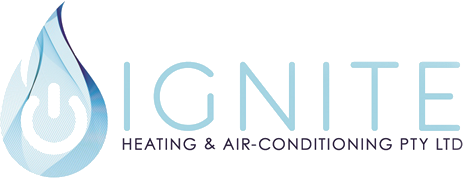
Discover the benefits of upgrading to an evaporative cooling system for your home or business in Melbourne. Improve air quality with Ignite Heat & Cool.
Evaporative cooling systems have gained popularity as an energy-efficient alternative to traditional air conditioning. This cost-benefit analysis examines the advantages and potential drawbacks of upgrading to an evaporative cooling system.
We’ll explore the initial investment, ongoing operational costs, and long-term savings associated with this eco-friendly cooling solution. By the end of this analysis, you’ll have a clear understanding of whether an evaporative cooling system is the right choice for your home or business.
Cost Savings of Evaporative Cooling Systems
Evaporative cooling systems are indeed budget-friendly and can lead to significant cost savings. Below are some of the reasons why:
• Lower Initial Cost: Evaporative coolers typically have a lower purchase and installation cost compared to traditional air conditioning systems. This means a smaller upfront investment for homeowners or businesses.
• Reduced Energy Consumption: These systems use significantly less electricity than conventional air conditioners. They primarily rely on the natural process of water evaporation to cool the air, which requires much less energy than compressor-based cooling systems.
• Lower Operating Costs: Due to their reduced energy consumption, evaporative coolers are much cheaper to run daily. This can result in noticeably lower electricity bills, especially during peak summer months.
• Simpler Maintenance: Evaporative coolers have fewer moving parts and a simpler overall design compared to traditional aircon units. This typically translates to lower maintenance costs over the life of the system.
• Longer Lifespan: With proper maintenance, evaporative coolers often last longer than conventional air conditioners, providing more years of service for the initial investment.
• No Refrigerants: These systems don’t use refrigerants, which can be expensive to recharge or replace in traditional aircon systems.
• Compatibility with Solar Power: The lower power requirements of evaporative coolers make them more compatible with solar power systems, potentially leading to even greater energy savings.
Another key advantage of evaporative cooling is its ability to provide fresh, filtered air throughout the building. Unlike air conditioning systems that recirculate the same air, evaporative coolers continuously draw in fresh outside air, filtering out dust, pollen, and other airborne contaminants. This not only improves indoor air quality but can also help reduce the risk of respiratory issues and allergies, particularly for those with sensitive conditions.
Factors to Consider When Upgrading to Evaporative Cooling
When considering an upgrade to an evaporative cooling system, there are several important factors to keep in mind:
• Climate: Evaporative cooling works best in hot, dry climates, such as those found in many parts of Australia. In areas with high humidity, the cooling effect may be less pronounced.
• Building design: The size and layout of the building will determine the type and size of the evaporative cooling system required. Factors such as ceiling height, window placement, and insulation can all impact the system’s performance.
• Water availability: Evaporative coolers require a reliable source of water to function effectively. In areas with water restrictions or limited supply, alternative cooling options may be more suitable.
• Maintenance: Regular maintenance, such as cleaning the cooling pads and checking for leaks, is essential to ensure optimal performance and longevity of the system.
Contact us at Ignite Heating and Air Conditioning for all your heating and cooling, hot water, gas fitting and plumbing needs.
